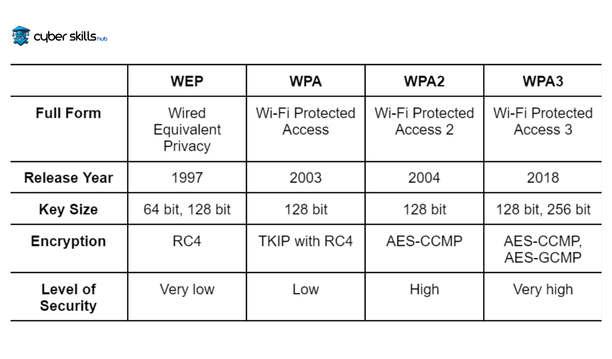Currently Empty: $0.00
What is WPA3 and Why is it Important? A Revolution in Internet Security

What is WPA3? Basic Definition and Features
WPA3 (Wi-Fi Protected Access 3) is the latest and most advanced protocol developed for wireless network security. Introduced by the Wi-Fi Alliance in 2018, this protocol offers much stronger encryption and authentication mechanisms compared to previous versions. WPA3 is designed to protect the data of users and businesses against increasing cyber threats.
The key features of WPA3 include advanced encryption algorithms, stronger password protection, and secure connections even on open networks. This protocol offers two different modes for both individual users and corporate customers: WPA3-Personal and WPA3-Enterprise. Both modes include significant security improvements over the previous WPA2 protocol.
One of the most notable features of WPA3 is its use of a new key exchange protocol known as “Simultaneous Authentication of Equals” (SAE). This protocol provides much more effective protection against brute force attacks and enhances the security of even weak passwords. Additionally, the “Forward Secrecy” feature included with WPA3 ensures that older data is protected against potential future attacks.
How WPA3 Works
The working principle of WPA3 is much more sophisticated and secure than previous protocols. At the heart of this protocol lies a new key exchange mechanism known as Simultaneous Authentication of Equals (SAE). SAE is also known as Dragonfly key exchange and works as follows:
- Initialization Phase: The device and access point send a “commit” message to each other to establish a connection. This message contains a number randomly selected by both parties.
- Verification Phase: Both parties generate an encryption key using the number sent by the other party and their own number. These keys are derived using a password and other parameters.
- Key Verification: The generated keys are compared. If they match, the connection is established. This process is much more resistant to brute force attacks.
Another important feature of WPA3 is Forward Secrecy, which works as follows:
- Unique and temporary keys are generated for each session.
- These keys are automatically destroyed when the session ends.
- This prevents old data from being compromised in future attacks.
WPA3’s Enterprise mode works with a 192-bit security suite. This mode is designed specifically for corporate environments that require high security. The encryption algorithms used include powerful standards such as AES-256 and SHA-384.
These operating principles clearly demonstrate why WPA3 is significantly more secure than previous protocols. WPA3 is a comprehensive security solution designed to provide effective protection against modern cyber threats.

Key Differences Between WPA2 and WPA3
The most fundamental difference between WPA2 and WPA3 is the level of security. WPA3 is designed to address the weaknesses of its predecessor, WPA2, and provide more effective protection against modern cyber threats. Here are some key differences between WPA2 and WPA3:
- Encryption Strength:
- WPA2: Uses 128-bit AES encryption.
- WPA3: Offers 192-bit encryption, which provides much stronger protection.
- Key Exchange Protocol:
- WPA2: Uses a 4-way handshake method.
- WPA3: Uses the more secure SAE (Simultaneous Authentication of Equals) protocol.
- Open Network Security:
- WPA2: Does not provide security on open networks.
- WPA3: Provides encryption even on open networks with Opportunistic Wireless Encryption (OWE).
- Protection Against Brute Force Attacks:
- WPA2: Vulnerable to weak passwords.
- WPA3: Thanks to powerful mathematical algorithms, it is much more resistant to brute force attacks.
- Forward Secrecy:
- WPA2: This feature is not supported.
- WPA3: Ensures the security of old data by regularly renewing session keys.
These differences clearly demonstrate why WPA3 is revolutionary in terms of internet security. WPA3 offers users and businesses a much more secure wireless network experience.
Key Benefits and Security Innovations of WPA3
WPA3 introduces a number of groundbreaking innovations and benefits to address the weaknesses of its predecessor, WPA2, and provide comprehensive protection against modern cyber threats. These enhancements address the needs of both individual users and organizations that require high security. Here are the key features that make WPA3 more secure:
- Stronger Password Protection (SAE Protocol): WPA3 uses the “Simultaneous Authentication of Equals” (SAE) protocol. This technology makes brute-force and offline dictionary attacks on the network virtually impossible, even if users choose simple and predictable passwords. The attacker has to actively interact with the network for each password attempt, making it very difficult to crack.
- Automatic Encryption on Open Networks (OWE): Unencrypted Wi-Fi networks in public places such as airports and cafes are one of the biggest security risks. WPA3 solves this problem with its “Opportunistic Wireless Encryption” (OWE) feature. It creates an individual connection between your device and the access point that encrypts data, even without a password. This prevents anyone else on the same network from eavesdropping on your data.
- Enhanced Enterprise and Government Level Security (192-bit Suite): WPA3-Enterprise mode offers a much stronger 192-bit security suite for environments with sensitive data such as finance, defense and government. This mode provides the highest level of protection using more advanced encryption algorithms (such as AES-256) and cryptographic standards.
- Forward Secrecy: WPA3 adopts the principle of “Forward Secrecy”. This means that a unique and temporary encryption key is generated for each connection session. Even if your network password is somehow compromised in the future, the internet traffic you recorded in the past cannot be decrypted without these keys. This ensures that your old data remains safe.
- Streamlined IoT Device Security (Easy Connect): IoT (Internet of Things) devices without a screen or keyboard, such as smart lamps and thermostats, are difficult to securely connect to the network. WPA3’s “Easy Connect” feature allows these devices to be securely included in the network with simple methods such as QR code scanning, thus increasing the security of your smart home ecosystem.
WPA3-Compliant Devices and Transition Process
The transition to WPA3 is an important step for the technology industry. However, this transition process will take time, as it requires all devices and network infrastructures to be updated. Here is what you need to know about WPA3-compatible devices and the transition process:
- WPA3-Compatible Devices:
- Next generation Wi-Fi routers and access points
- Modern smartphones and tablets (especially models from 2019 onwards)
- Computers with up to date operating systems
- New generation IoT devices
- Backward Compatibility: WPA3 is designed to be backward compatible with WPA2. This allows WPA3-enabled devices to connect to WPA2 networks and WPA2 devices to connect to WPA3 networks (at a reduced security level).
- Transition Process Steps:
- Updating the network infrastructure (routers and access points)
- Updating or replacing end user devices
- Training for network administrators and IT personnel
- Updating security policies and procedures
- Challenges and Solutions:
- Incompatibility of older devices: Mixed mode usage (WPA2/WPA3)
- Cost: Phased transition planning
- User training: Provision of simple guides and explanations
- Estimated Transition Time: Industry experts predict that a full WPA3 transition could take 3-5 years. However, this timeframe may vary depending on the industry and size of the organization.
The transition to WPA3 is an important step in internet security. Users and businesses can play an active role in this transition process and contribute to the creation of a more secure digital environment. Keeping your devices and network infrastructure up to date is one of the most important steps you can take in this process.

WPA3 Installation and Configuration
Installing and configuring WPA3 is an effective way to significantly improve your network security. However, this process may vary depending on your device model and software. Here is a general WPA3 installation and configuration guide:
- Hardware Check:
- Make sure your router or access point supports WPA3.
- If it does not support it, a firmware update or purchase of a new device may be necessary.
- Firmware Update:
- Update your router or access point’s firmware to the latest version.
- This can usually be done from the device’s web interface or mobile app.
- Accessing the Router Interface:
- Enter your router’s IP address into your browser (usually 192.168.0.1 or 192.168.1.1).
- Enter the administrator username and password.
- Go to Wireless Security Settings:
- Find “Wireless Settings,” “Security,” or a similar menu.
- Select the security mode (WPA3-Personal or WPA3-Enterprise).
- Selecting WPA3 Mode:
- Select only WPA3 or WPA2/WPA3 mixed mode option.
- Mixed mode allows older devices to connect to the network.
- Setting a Strong Password:
- Create a complex password that is at least 12 characters long.
- It must contain upper and lower case letters, numbers, and special characters.
- Enabling Additional Security Features:
- If available, enable features such as “Forward Secrecy” or “Protected Management Frames.”
- Saving Settings and Restarting:
- Save all changes.
- Restart the router.
- Reconnecting Devices:
- Connect all your devices to the new WPA3 network.
- Don’t forget your old password, enter your new password.
- Performing Security Tests:
- Perform security scans to test the security of your network.
- Identify and correct potential weaknesses.
Installing and configuring WPA3 will significantly improve the security of your network. However, if you encounter any problems during this process, be sure to refer to your device’s user manual or contact the manufacturer for support.
Frequently Asked Questions About WPA3
Here are some frequently asked questions and answers about WPA3 from users and IT professionals:
How much more secure is WPA3 than WPA2?
WPA3 is much more resistant to brute force attacks. It also provides encryption even on open networks and enhances the security of old data with its Forward Secrecy feature.
Do I need new hardware to use WPA3?
In most cases, yes. A router or access point that supports WPA3 is required. However, some devices can gain WPA3 support with a firmware update.
Is WPA3 compatible with older devices?
WPA3 is designed for backward compatibility. Most WPA3 networks can be configured to allow WPA2 devices to connect as well.
Are there different modes for WPA3?
Yes, there are two main modes: WPA3-Personal and WPA3-Enterprise. The Enterprise mode offers additional security features for larger organizations.
How does WPA3 make open Wi-Fi networks more secure?
WPA3 provides data encryption even on open networks with its Opportunistic Wireless Encryption (OWE) feature.
Do I still need to use a strong password when using WPA3?
Yes, using a strong password is always recommended. While WPA3 makes weak passwords more secure, strong passwords are still best practice.
Does WPA3 eliminate the need for VPN?
No, VPNs are still important. WPA3 improves network security, but VPNs provide a different layer of security and hide your IP address.
How does WPA3 improve the security of IoT devices?
WPA3 makes it easy for IoT devices to connect securely to the network with the Easy Connect feature.
Does WPA3 have a negative impact on performance?
In general, WPA3 has no significant negative impact on performance. In fact, in some cases, it can improve performance thanks to more efficient encryption methods.
Does WPA3 provide protection against all cyber attacks?
WPA3 provides strong protection against many types of attacks, but no system is 100% secure. It is important to take other security measures as well.
These questions and answers will help you understand the basic features and advantages of WPA3. However, as technology is constantly evolving, it is always important to refer to official sources for up-to-date information.
The Importance of WPA3 and Its Role in Internet Security
WPA3 represents an important milestone in internet security. This protocol is a powerful line of defense designed to protect the data of users and businesses against growing cyber threats. The importance of WPA3 and its role in internet security can be summarized as follows:
- Advanced Encryption: WPA3 uses encryption algorithms that are much stronger than previous protocols. This provides effective protection against data theft and man-in-the-middle attacks.
- Security on Open Networks: WPA3’s Opportunistic Wireless Encryption feature ensures data security even on public Wi-Fi networks. This is critical for mobile workers and travelers.
- IoT Security: Security features specifically designed for the growing number of IoT devices enhance the security of smart home and industrial IoT applications.
- Corporate Security: WPA3-Enterprise mode offers an ideal solution for corporate environments that require high security. The 192-bit security package plays a critical role in protecting sensitive data.
- Preparing for Future Threats: WPA3 is also prepared for potential threats from quantum computers. This indicates that the protocol will play an important role in long-term security strategies.
- User-Friendly Security: WPA3 offers strong security measures with a user-friendly approach. This ensures that security applications are adopted by a wider audience.
- Fighting Cybercrime: The advanced security features offered by WPA3 have become an important tool in the fight against cybercrime.
WPA3 is an important protocol that shapes the future of internet security. By adopting and implementing WPA3, users and businesses can protect their digital assets much more effectively.







